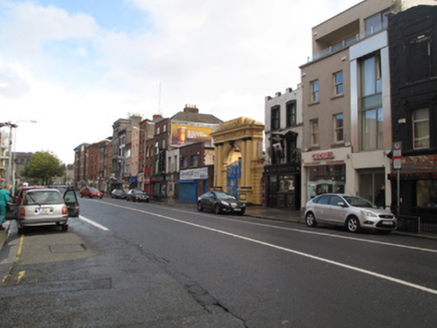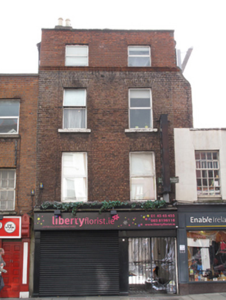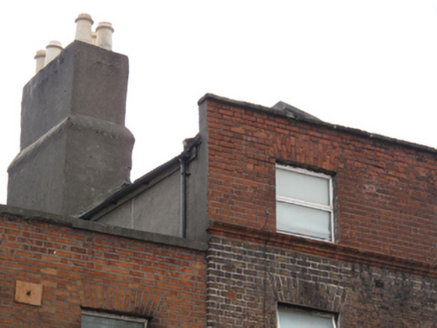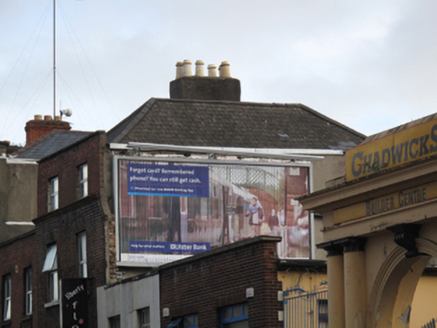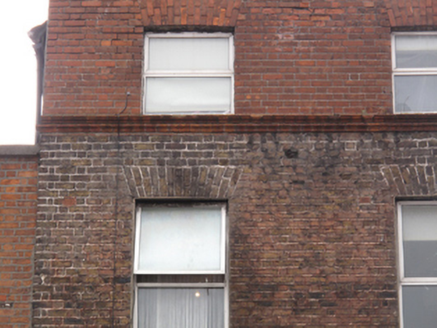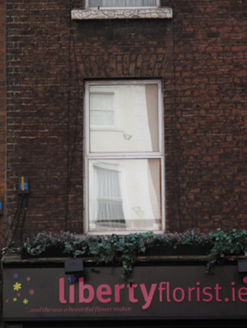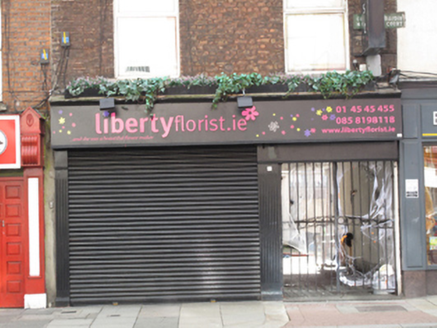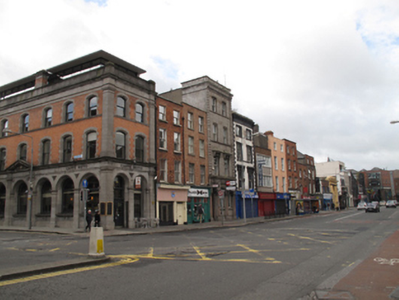Survey Data
Reg No
50080572
Rating
Regional
Categories of Special Interest
Architectural, Social
Previous Name
Express Train
Original Use
House
In Use As
Shop/retail outlet
Date
1740 - 1760
Coordinates
314821, 233865
Date Recorded
04/11/2013
Date Updated
--/--/--
Description
Terraced two-bay four-storey former house with integral carriage opening, built c.1750, having recent shopfront to front (north) elevation. Now in use as shop. Hipped artificial slate roof, set perpendicular to street, with rendered chimneystacks having clay chimneypots. Red brick parapet having granite coping and moulded red brick cornice forming continuous sill course to third floor windows. Red brick laid in Flemish bond to front, rebuilt to third floor. Rendered walls to east and west elevations. Square-headed window openings with painted masonry sills and replacement uPVC windows.
Appraisal
Dublin Civic Trust, in the 'Survey of Gable-Fronted House and Other Early Buildings of Dublin City' 2012, states 'The unassuming facade of this former townhouse belies a relatively early build date. The steep roof with ridge perpendicular to the street, the large central chimneystack and the rebuilding of the third floor all suggest either a modified formerly gabled house of the early eighteenth-century or a transitional style house of a similar form to today of c.1740-60. The fragment of matching brickwork extending over the adjacent, slightly smaller, property indicates this house was built as a pair with No.69, of which the ground and first floors only survive. This is further confirmed by photographic evidence from the 1950s. The brickwork retains expansive sections of original lime wigging and is one of the best examples of authentic brick jointing surviving on Thomas Street. The laneway of Madden’s Court incorporated at ground floor level is a further point of interest and connection with the early origins of Thomas Street, and may yield clues about the morphology of this site.' Thomas Street developed along the ancient Slige Mor highway to the west, and was named after an Abbey dedicated to Saint Thomas the Martyr, which was established in the area in 1177. The city water course partially ran along the street until it was paved over in 1696, and the ready availability of water contributed to the development of the street as a centre of brewing and distilling.
